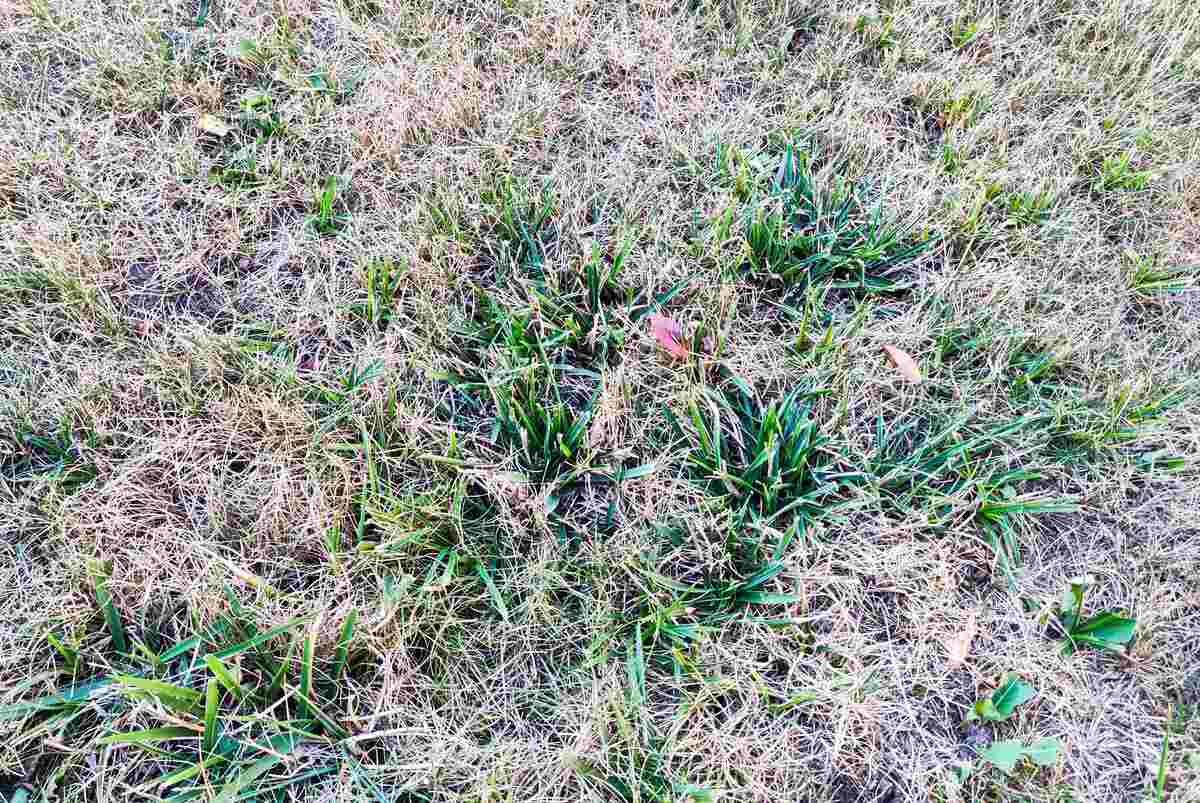
The signs of acidic soil in lawns include yellow or brown grass, poor grass growth, and an increased susceptibility to moss, weeds, pests, and diseases.
In this article, we’ll not only explain common signs of acidic soil, but we’ll also give you tips on how to correct acidic soil to help your turfgrass grow strong and healthy once again.
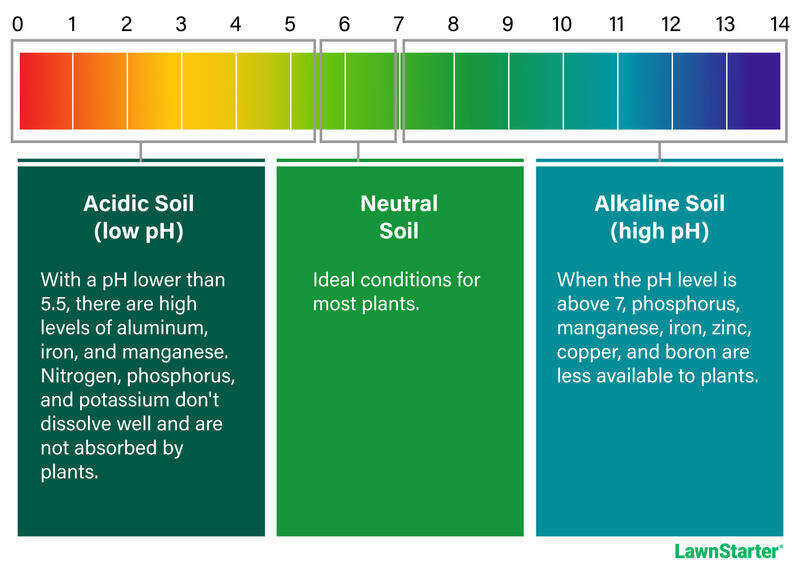
Yellow or Brown Grass
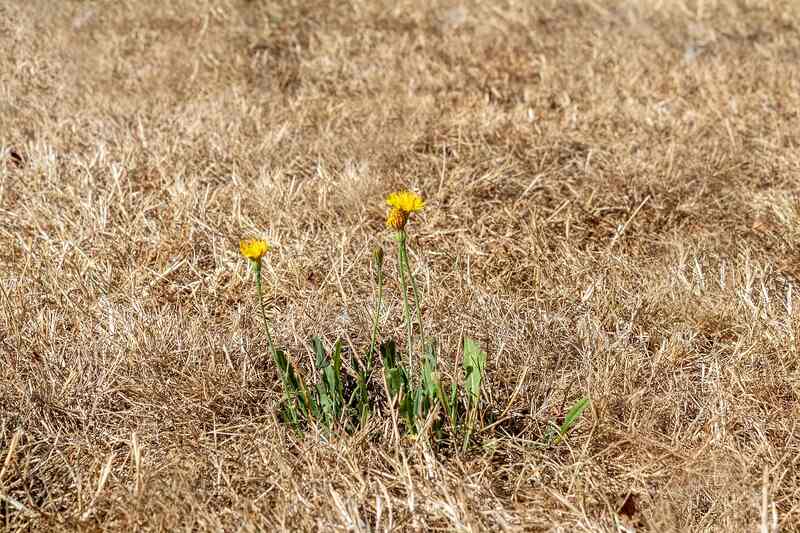
Grass in soil that is too acidic will wilt, turning yellow and then brown. That’s because essential nutrients like nitrogen, phosphorus, calcium, and magnesium, and micronutrients like boron and molybdenum, are unavailable in strongly acidic soils (<5.2 pH).
Nitrogen and phosphorus are two of the three most important nutrients for turf growth. A lack of either can cause your grass to turn yellow. A nitrogen deficiency will eventually turn your turf brown.
Keep in mind that yellow grass patches are a symptom of many lawn problems, such as:
- High soil pH (alkaline soil)
- Too much thatch
- Compacted soil
- Nutrient deficiencies not linked to imbalances in soil pH
Always conduct a soil test to rule out a low soil pH before raising the pH of your lawn.
See Related:
Slow Grass Growth
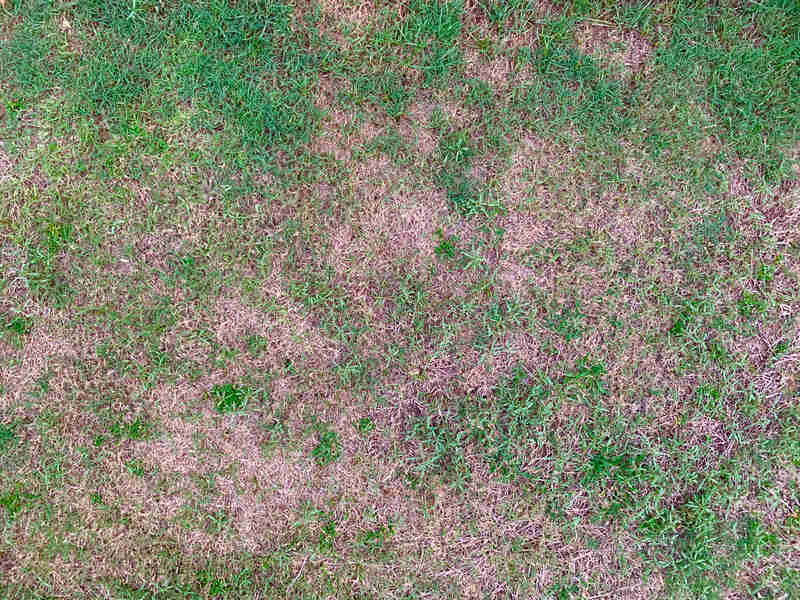
If your lawn is growing very slowly, you might have acidic soil. We have mentioned above that some nutrients are not available in soil with a low pH level, with phosphorus being among them. Phosphorus is essential for healthy plant growth, so a phosphorus deficiency stunts grass growth.
While slow-growing grass might be alluring, as you won’t need to mow as often, it won’t be able to recover from damage very well. Eventually, your poorly growing grass will weaken and die.
Phosphorus is also responsible for the healthy growth of grass seedlings, so planting grass to reinvigorate your lawn without raising the soil pH will have disastrous results.
Ineffective Fertilization
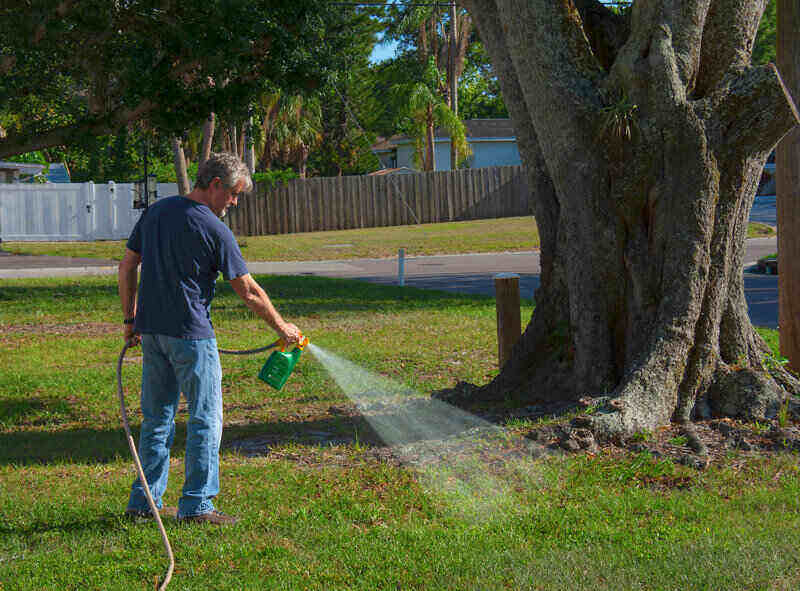
So, dethatching your lawn, aerating it, and adding new grass isn’t working. You might add fertilizer to your yellowing or browning lawn in an attempt to bring it back to life. If you have acidic soil, granular fertilizers will have little to no effect. The nutrients you’re putting down in the soil will become insoluble (a form plants can’t use).
Using a liquid fertilizer will give you more success, as you’ll be spraying the nutrients directly onto your turf’s leaves, but there are a few caveats: Liquid fertilizer is more expensive than granular fertilizer, washes off more easily, and is less environmentally friendly.
See Related: How to Dethatch Your Lawn
Dying Grass
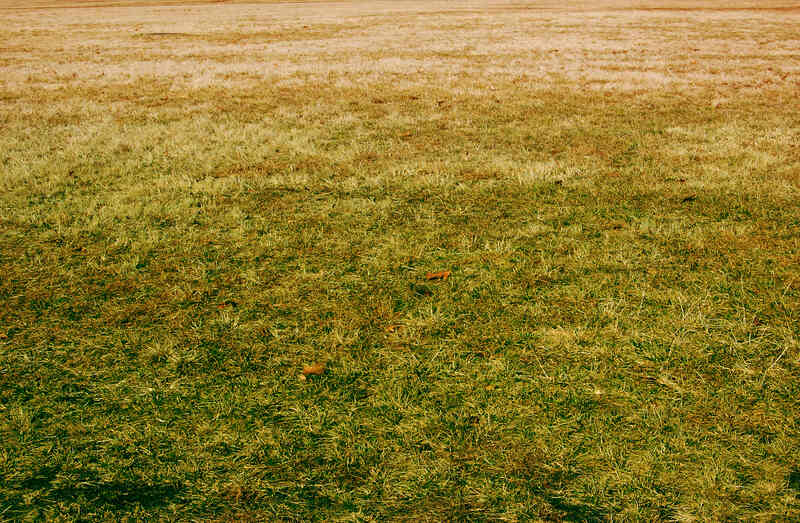
Aside from preventing your grass from accessing vital nutrients, acidic soil can also kill your plants by making certain elements available in toxic amounts. These elements are zinc, copper, iron, manganese, and aluminum. The first four are more available and are easier for plants to absorb in acidic soil.
Aluminum is particularly harmful in strongly acidic soil. An article published in the journal “Ecotoxicology and Environmental Safety” states aluminum worsens root and shoot growth, causes nutritional imbalances, and messes with biological processes in the plants. It also mentions that its effect becomes much worse in soil with a pH level below 5.5.
Eventually, acidic soil will kill off patches of grass, thin out your lawn, or even cause your whole lawn to die. Without correcting this pH imbalance, most attempts to grow a new lawn by planting grass or installing sod will fail.
See Related:
More Diseases and Weeds
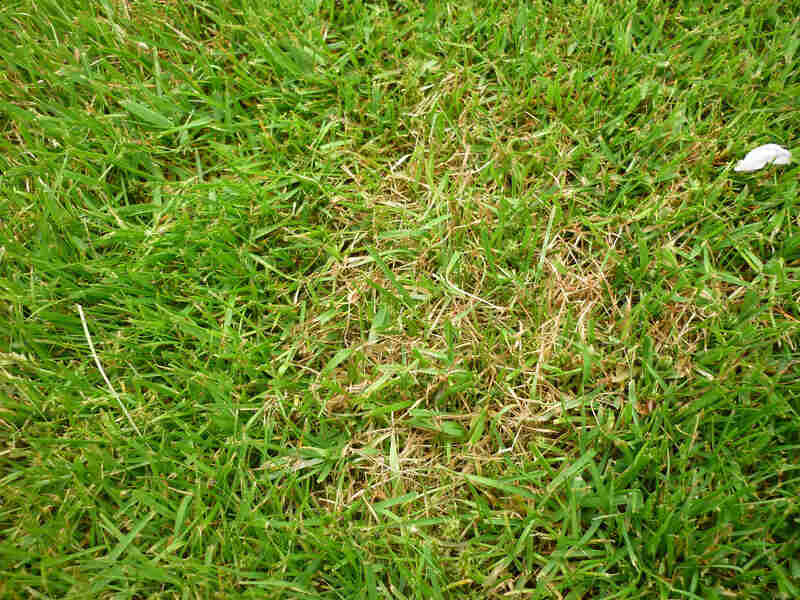
Generally, weak turf is more prone to getting hit by diseases, overtaken by weeds, and eaten by pests. If your lawn looks like it has disease or pest damage, or if there are more weeds than usual, then your lawn may have a low soil pH.
Some common lawn diseases are seen more often in acidic soil:
Many lawn weeds also like acidic soil. Here is a short list of a few of these acid-loving weeds:
- Bentgrasses (can be a turfgrass, but are often unwanted)
- Broadleaf plantain
- Crabgrass
- Dandelions
- Hawkweed
- Knapweed
- Lady’s-thumb smartweed
- Prostate knotweed
- Red sorrel
- Silver cinquefoil
- Sowthistle
Another sign of low soil pH is the presence of moss. Moss will have an easier time growing on your lawn if you have acidic soil.
See Related:
- Read Your Weeds: Identify Them to Learn About Your Lawn’s Health
- How to Get Rid of Dandelions
- How to Get Rid of Crabgrass in Your Yard
- How to Remove Moss From Your Lawn
FAQs About Low Soil pH
You can raise your soil pH by liming your lawn or adding wood ash. Most of the signs of acidic soil are also signs your lawn needs lime. However, it may take months or even years for lime or other soil amendments to affect the soil pH in your lawn.
Your soil might be more acidic because of the following factors:
• Location. Some areas in the U.S. have more acidic soil than the rest of the country. These areas include the Eastern U.S., the Pacific Northwest, and parts of California, Wisconsin, and Minnesota. Your location will also influence soil type and climate, which may affect soil acidity.
• Soil type. According to Oklahoma State University Extension, sandy soils are more likely to become acidic. This is because they are prone to leaching due to rainfall and overwatering and have low levels of bases, which help to maintain a balanced pH.
• Climate. Areas with heavy rainfall tend to have more acidic soil. Leaching washes away calcium, potassium, magnesium, and other base cations which help keep soil alkaline. Rain is also mildly acidic in nature.
• Overwatering. Overwatering has the same effect as rainfall, washing away base cations.
• Pollution. Excessive air pollution can turn rain even more acidic (acid rain), which contributes to soil acidity.
• Excess nitrogen. Adding too much nitrogen fertilizer can make the soil more acidic. Dead leaves and plants can also make soil more acidic as they break down. Lastly, animal urine and droppings can also make your soil more acidic.
The best pH level for grass is slightly acidic to neutral, around 6.0 to 7.0. Anything lower than 7.0 is acidic and anything higher is alkaline.
Some grasses can survive in soil that is more acidic or more alkaline than normal. But this is rarely below 5.0 on the pH scale or above 8.0.
Connect with a Lawn Care Pro For Healthy Grass
Low soil pH is only one of many possible causes for a thinning, yellow lawn. If you maintain your lawn well, you won’t need to worry about lackluster turf.
If you are already dealing with unhealthy turf, and aren’t sure how to go about fixing it, you might benefit from hiring a pro. LawnStarter’s lawn care pros have the knowledge, tools, and experience to help turn your lawn around with proper mowing, lawn treatments, and more. Connect with a LawnStarter pro in your area today.
Sources:
- Aluminum phytotoxicity in acidic environments: A comprehensive review of plant tolerance and adaptation strategies” published in the Ecotoxicology and Environmental Safety journal
- Oklahoma State University Extension: Cause and Effects of Soil Acidity
- Pennsylvania State University Extension: Indicator Weeds Provide Insight into Growing a Better Lawn
- University of Connecticut Extension: Weeds as Indicators of Growing Conditions in Landscapes
- University of Florida Institute of Food and Agricultural Sciences Extension: Weeds as Indicators of Soil Conditions in Lawns and Landscapes
- University of Massachusetts Amherst: Soil pH and Liming
Main Image Credit: daily_creativity / Adobe Stock Free / License